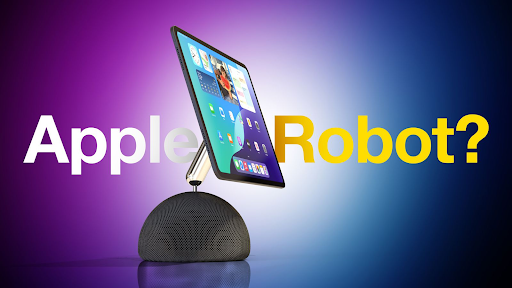- Tiny Big Spark
- Posts
- Beyond Balance: How Great Leaders Build Sustainable Teams That Last
Beyond Balance: How Great Leaders Build Sustainable Teams That Last
Why real success isn’t about working less — it’s about leading with rhythm, recovery, and endurance
Sustaining the Humans: What Real Balance Looks Like in a World That Never Stops
The Myth of Balance
Somewhere along the way, “work-life balance” became a slogan — an ideal everyone nods to but few genuinely understand. For decades, it was pictured as a scale: equal weight on both sides, perfect stillness, perfect control.
But life doesn’t work like that. Especially not in the world of modern work — where laptops glow through weekends, messages never stop, and mental tabs stay open long after the workday ends.
For many, the idea of balance feels almost mocking. The truth is simpler but harder to accept: work is part of life, not its opposite. The real challenge isn’t separating the two — it’s managing how they feed or drain each other.
Modern balance isn’t symmetry. It’s rhythm — a pattern that shifts with seasons, responsibilities, and circumstances.
Some weeks demand intensity; others allow space. The art is in noticing when one has overtaken the other before it silently turns into resentment or burnout.
Tip: Instead of chasing “balance,” aim for alignment. Ask weekly:
“Do my hours reflect my priorities right now?”
If the answer feels wrong for too long, change the pattern — not the goal.

The Cognitive Weight of Always Being On
Technology gave flexibility but also erased boundaries. The office used to have walls; now, work lives in pockets and follows home through quiet notifications.
The modern worker doesn’t stop working when the laptop closes — their mind keeps solving, worrying, refining. That’s cognitive carryover: the silent workload that never clocks out.
Apple Is Coming for the Smart Home — And Fast

Apple’s rumored Face-ID door lock and smart display hub are more than just new products. It’s a clear signal: they’re going all-in on smart home automation.
The tech giant is doubling down on the smart home, the $158B industry that’s growing 23% annually.
And with Apple’s entry, investors are looking for the next breakout company - and potential acquisition target.
They’re chasing Google (acquired Nest, $3.2B) and Amazon (acquired Ring, $1.2B).
History shows: when Apple plays catch-up, they go big.
And there’s one startup perfectly positioned to benefit.
With 10+ patents, distribution in over 100 Best Buy stores, and revenue growth that doubled year-over-year, they’re built for a huge breakout.
Early investors in Ring and Nest saw life-changing returns.
Invest Now - RYSE is open at just $2.25/share.
For managers, this invisible layer is especially dangerous. It blurs the line between dedication and depletion. It’s why even when hours seem “reasonable,” exhaustion grows.
Add to this the illusion of flexibility — the idea that being able to “work anytime” equals freedom. In practice, it often becomes “working all the time.”
And then there’s seasonality — the unspoken truth that some months simply demand more. End-of-quarter pushes, launch weeks, hiring cycles. Pretending every month should feel the same only sets teams up for guilt or disappointment.
Balance is not a constant state; it’s a negotiated truce with time.
Tip: Normalize intentional imbalance. Let teams know when a sprint will demand more and when recovery time will follow. Predictable cycles prevent silent fatigue and build trust in leadership decisions.
Effortless Tutorial Video Creation with Guidde
Transform your team’s static training materials into dynamic, engaging video guides with Guidde.
Here’s what you’ll love about Guidde:
1️⃣ Easy to Create: Turn PDFs or manuals into stunning video tutorials with a single click.
2️⃣ Easy to Update: Update video content in seconds to keep your training materials relevant.
3️⃣ Easy to Localize: Generate multilingual guides to ensure accessibility for global teams.
Empower your teammates with interactive learning.
And the best part? The browser extension is 100% free.
Why Managers Should Care About Balance
There’s a persistent myth that caring about work-life balance is a luxury — something “soft” or optional. It isn’t. It’s infrastructure.
People are not endless engines. They can’t produce indefinitely without maintenance. When managers ignore this, the cost always arrives — in errors, disengagement, or attrition.
The top performer who “never stops” often becomes the burnout case who suddenly disappears. The person who skips every break eventually stops innovating. The one who’s always “fine” stops being honest.
Sustainable performance isn’t built on maximum effort. It’s built on recoverable effort. Managers who understand this play the long game. They trade spikes of productivity for years of steady contribution — and that’s what compounds value.
Culture starts with what’s tolerated. If constant availability is rewarded, exhaustion becomes status. But when rest and restraint are modeled, performance becomes strategic — not frantic.
Tip: Track sustainability metrics, not just output metrics. Watch for repeated late-night messages, skipped vacations, or people logging in sick. Patterns matter more than isolated events.
Stop Drowning In AI Information Overload
Your inbox is flooded with newsletters. Your feed is chaos. Somewhere in that noise are the insights that could transform your work—but who has time to find them?
The Deep View solves this. We read everything, analyze what matters, and deliver only the intelligence you need. No duplicate stories, no filler content, no wasted time. Just the essential AI developments that impact your industry, explained clearly and concisely.
Replace hours of scattered reading with five focused minutes. While others scramble to keep up, you'll stay ahead of developments that matter. 600,000+ professionals at top companies have already made this switch.
Leading by Example
Balance is not something leaders grant — it’s something they model.
A manager who never disconnects sends a message louder than any policy: “Success means overextension.”
That silent example shapes behavior faster than words. A healthy culture starts when leaders learn to manage their own boundaries first.
That means delegating instead of hoarding. Saying “no” to unrealistic timelines. Protecting quiet work from constant urgency. It’s leadership not by sacrifice, but by sustainability.
When managers demonstrate restraint, teams learn confidence — the freedom to step back without guilt. And when teams feel trusted to recover, they come back sharper, more creative, and more collaborative.
True balance isn’t a rulebook; it’s a signal system. A way to show what matters most.
Tip: Schedule visible boundaries. Leave on time once a week, or block no-meeting hours — not as privilege, but as precedent. People imitate what they see, not what they’re told.
The Gold standard for AI news
AI will eliminate 300 million jobs in the next 5 years.
Yours doesn't have to be one of them.
Here's how to future-proof your career:
Join the Superhuman AI newsletter - read by 1M+ professionals
Learn AI skills in 3 mins a day
Become the AI expert on your team
Building Cultures That Last
Good management isn’t just about output — it’s about longevity. It’s the difference between a team that burns bright and burns out, versus one that compounds experience, trust, and skill over time.
When leaders protect their teams from the chaos of short-term thinking, they create a foundation where people can do their best work for years, not months.
That’s the quiet multiplier of balanced leadership:
Lower turnover.
Higher morale.
Deep institutional memory.
A pipeline of people ready to grow into leadership themselves.
The irony is that the managers who obsess over short-term productivity usually end up with less of it. Because people leave. Knowledge walks out. Momentum resets.
The ones who play the long game — who manage energy as carefully as output — build cultures that attract talent instead of chasing it.
Tip: Add “sustainability” to your team’s goals. Not as a feel-good metric, but as a measure of system health: retention, skill growth, recovery cycles, workload predictability. What gets measured gets protected.
Closing Reflection – The Real Equation of Work and Life
The truth is, there’s no final version of balance. It’s something you constantly renegotiate as roles change, seasons shift, and life rearranges priorities.
What matters isn’t finding the perfect middle — it’s learning when to adjust the scales before one side collapses.
Leadership isn’t about maintaining equilibrium. It’s about designing systems where people — including you — can keep showing up at their best.
Because the point of balance isn’t rest for its own sake. It’s endurance. And endurance is what builds everything that lasts.
What’s your next spark? A new platform engineering skill? A bold pitch? A team ready to rise? Share your ideas or challenges at Tiny Big Spark. Let’s build your pyramid—together.
That’s it!
Keep innovating and stay inspired!
If you think your colleagues and friends would find this content valuable, we’d love it if you shared our newsletter with them!
PROMO CONTENT
Can email newsletters make money?
With the world becoming increasingly digital, this question will be on the minds of millions of people looking for new income streams in 2025.
The answer is—Absolutely!
That’s it for this episode!
Thank you for taking the time to read today’s email! Your support allows me to send out this newsletter for free every day.
What do you think for today’s episode? Please provide your feedback in the poll below.
How would you rate today's newsletter? |
Share the newsletter with your friends and colleagues if you find it valuable.
Disclaimer: The "Tiny Big Spark" newsletter is for informational and educational purposes only, not a substitute for professional advice, including financial, legal, medical, or technical. We strive for accuracy but make no guarantees about the completeness or reliability of the information provided. Any reliance on this information is at your own risk. The views expressed are those of the authors and do not reflect any organization's official position. This newsletter may link to external sites we don't control; we do not endorse their content. We are not liable for any losses or damages from using this information.





Reply